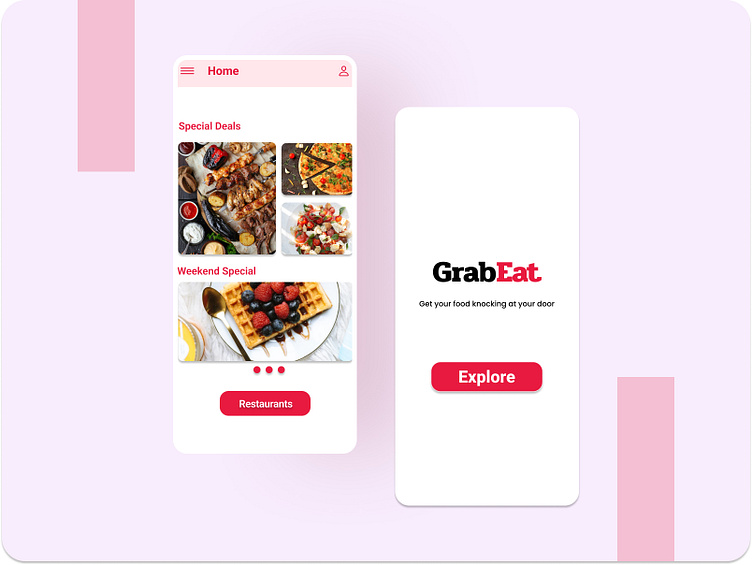GrabEat : Food Delivery App
A user-centered food delivery app designed to provide convenience and on-time food delivery for busy individuals
Introduction
Welcome to my personal project showcase, where GrabEat—a food delivery service that promises to transform how consumers order and eat their favourite meals—is featured. GrabEat, which I developed for my Google UX design course, is an example of my ability to produce user-centered designs that put emphasis on seamless experiences.
Project Overview
Duration: July 2022 to October 2022
Project Type: Personal project developed during my UX design course
Goal
Busy people do not have time to cook or eat out.
Existing food delivery platforms do not fully address their needs
Limited possibilities for tracking the delivery of food and ordering effectively
An app for food delivery that is convenient and easy to use
My Role
Create an app that is simple to use and intuitive so that users can quickly browse, choose, and order their favourite dishes from a variety of restaurants.
My Role
To ensure a smooth user experience from beginning to end, I obtained the primary role in designing and developing the GrabEat app as a UX designer.
Responsibilities
Conducted user interviews to identify the needs and pain points experienced by the participants.
Developed empathy maps to obtain an understanding of user motives and challenges
Personas were created, including Jaiden Ale, a busy businessman.
User journeys were created to identify essential encounters and opportunities for improvement.
Created paper and digital wireframes to visualize the app's structure and interactions
Built low-fidelity and high-fidelity prototypes for usability testing.
Gathered feedback and improved the designs by conducting usability testing.
Considered accessibility criteria to ensure equity in design choices
User Research
I conducted user interviews to understand their needs and pain points conducted interviews and created empathy maps to understand the users I was designing for and their needs. Through my research, I identified a primary user group of working adults who lack time to cook and prefer ordering food from outside. While this group confirmed my initial assumptions about GrabEat customers, further research revealed that time was not the sole factor limiting users from cooking at home. They also faced challenges related to obligations, interests, or difficulties acquiring groceries for cooking or visiting restaurants in person.
Pain points
Persona: Jaiden Ale
Jaiden Ale is a busy businessman who does not have time to cook or go to restaurants. He needs a simple and efficient way to browse and quickly place food orders.
User Journey map
Paper Wireframes
To ensure consistency with customer pain points, I sketched out multiple iterations of the app's interfaces on paper. The home screen was a primary focus, with an emphasis on a quick and straightforward purchase procedure to save users time.
Digital Wireframes
To ensure consistency with customer pain points, I sketched out multiple iterations of the app's interfaces on paper. The home screen was a primary focus, with an emphasis on a quick and straightforward purchase procedure to save users time.
Low-Fidelity Prototype
The final high-fidelity prototype presents cleaner user flows for ordering a dish and checkout. It also meets user needs for pickup or delivery options as well as more customization. View the GrabEat food delivery app
View the low-fidelity design prototype here.
Usability Study: Findings
I conducted two rounds of usability studies to gather feedback on the GrabEat app. The findings from the first study played a crucial role in guiding the design progression from wireframes to mockups. In the second study, a high-fidelity prototype was used to identify mockup areas that required refinement.
Mockups
Based on user feedback and insights from usability studies, I enhanced the mockups to address issues encountered during the account creation process. I wanted to improve the user experience overall, so I optimized and simplified the steps, provided clear directions, and added necessary form fields.
Based on user feedback and insights from usability studies, I enhanced the mockups to address issues encountered during the account creation process. I wanted to improve the user experience overall, so I optimized and simplified the steps, provided clear directions, and added necessary form fields.
High-Fidelity Prototype
The final high-fidelity prototype presents cleaner user flows for ordering a dish and checkout. It also meets user needs for pickup or delivery options as well as more customization.
View the GrabEat food delivery app here.











